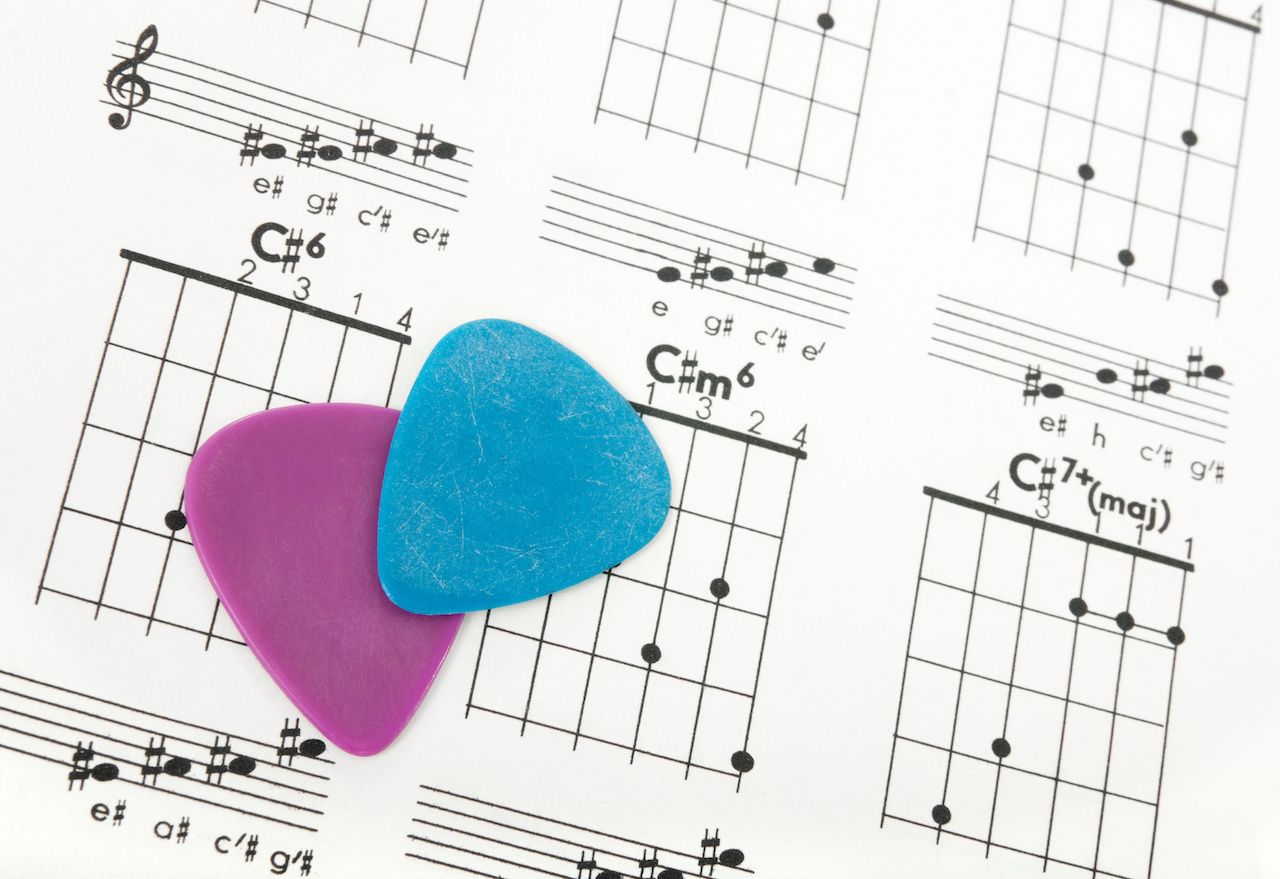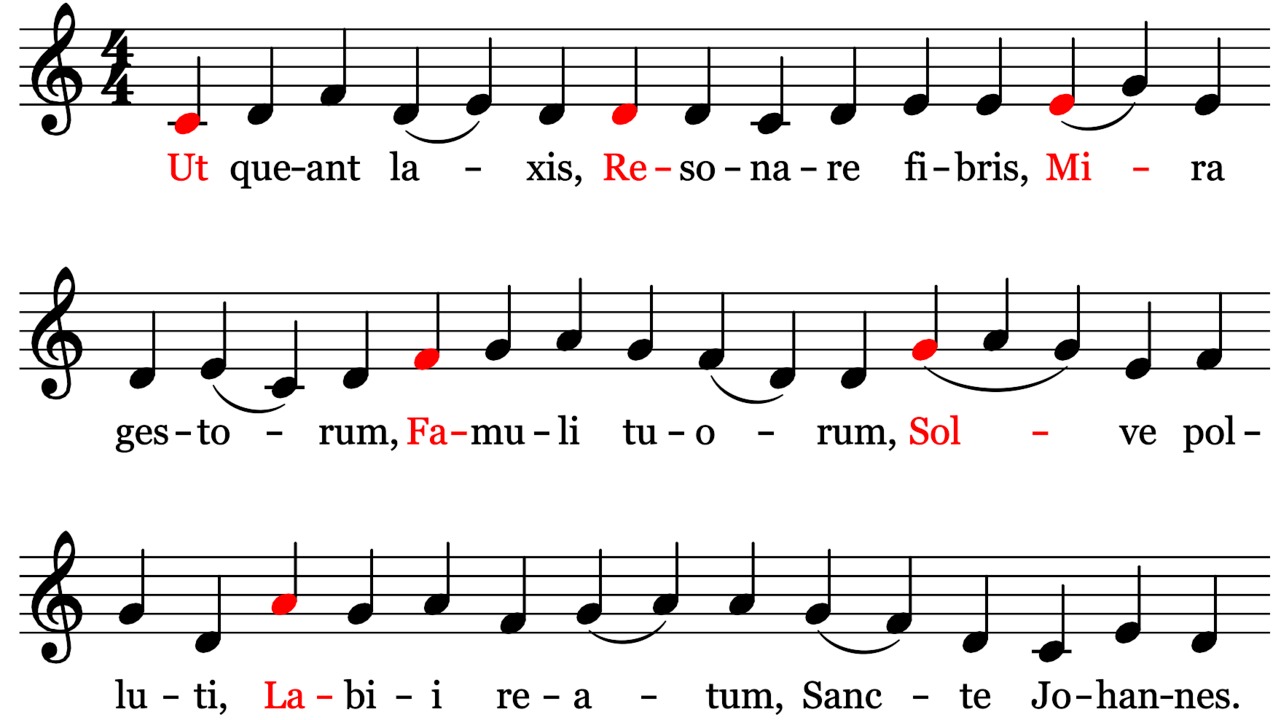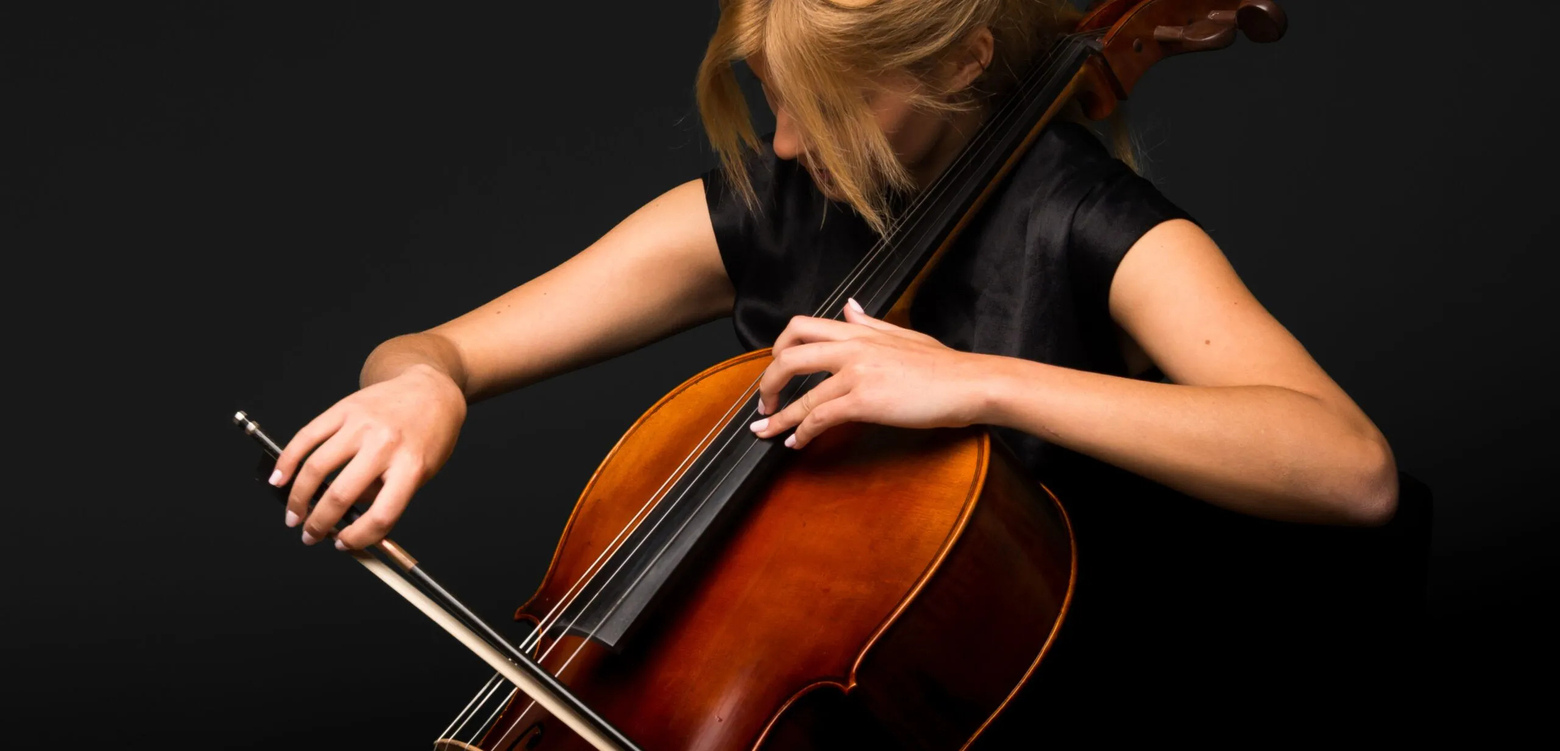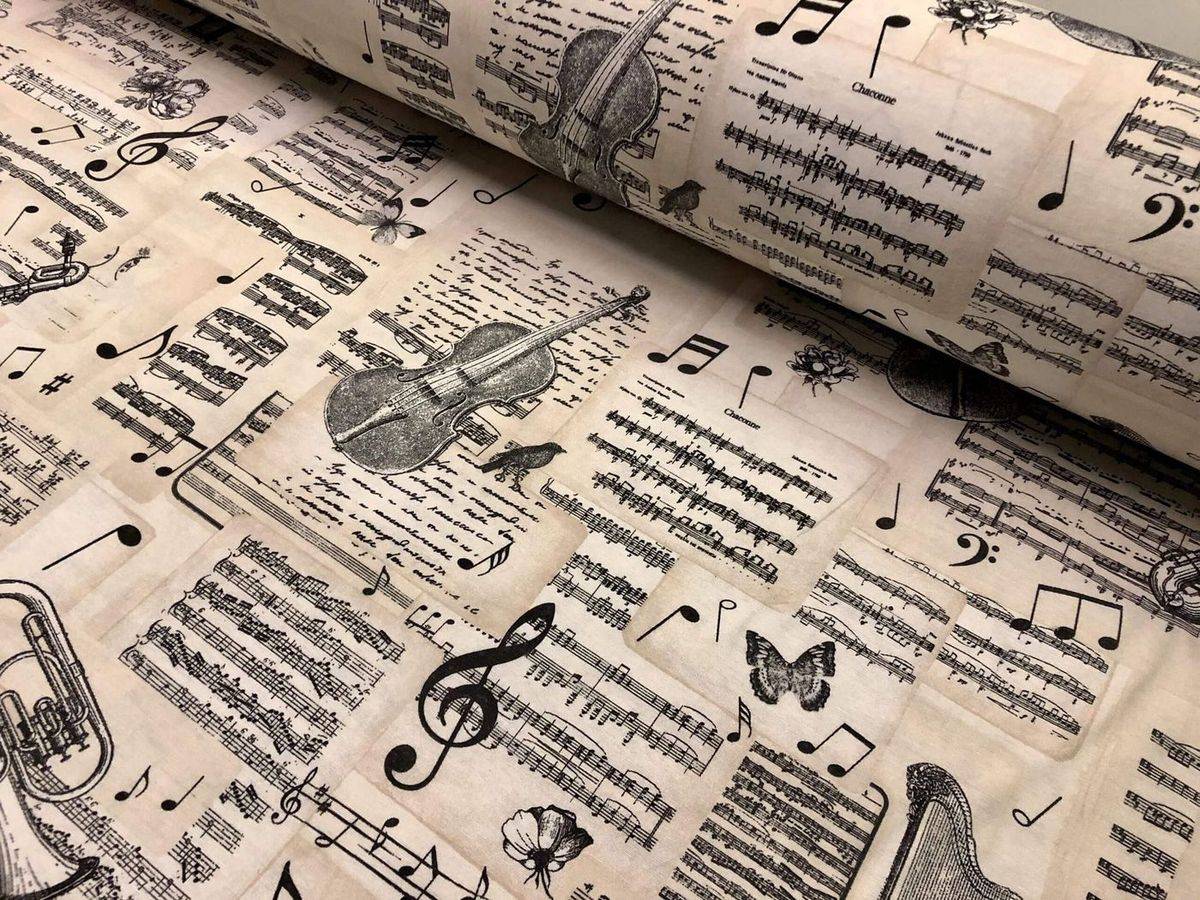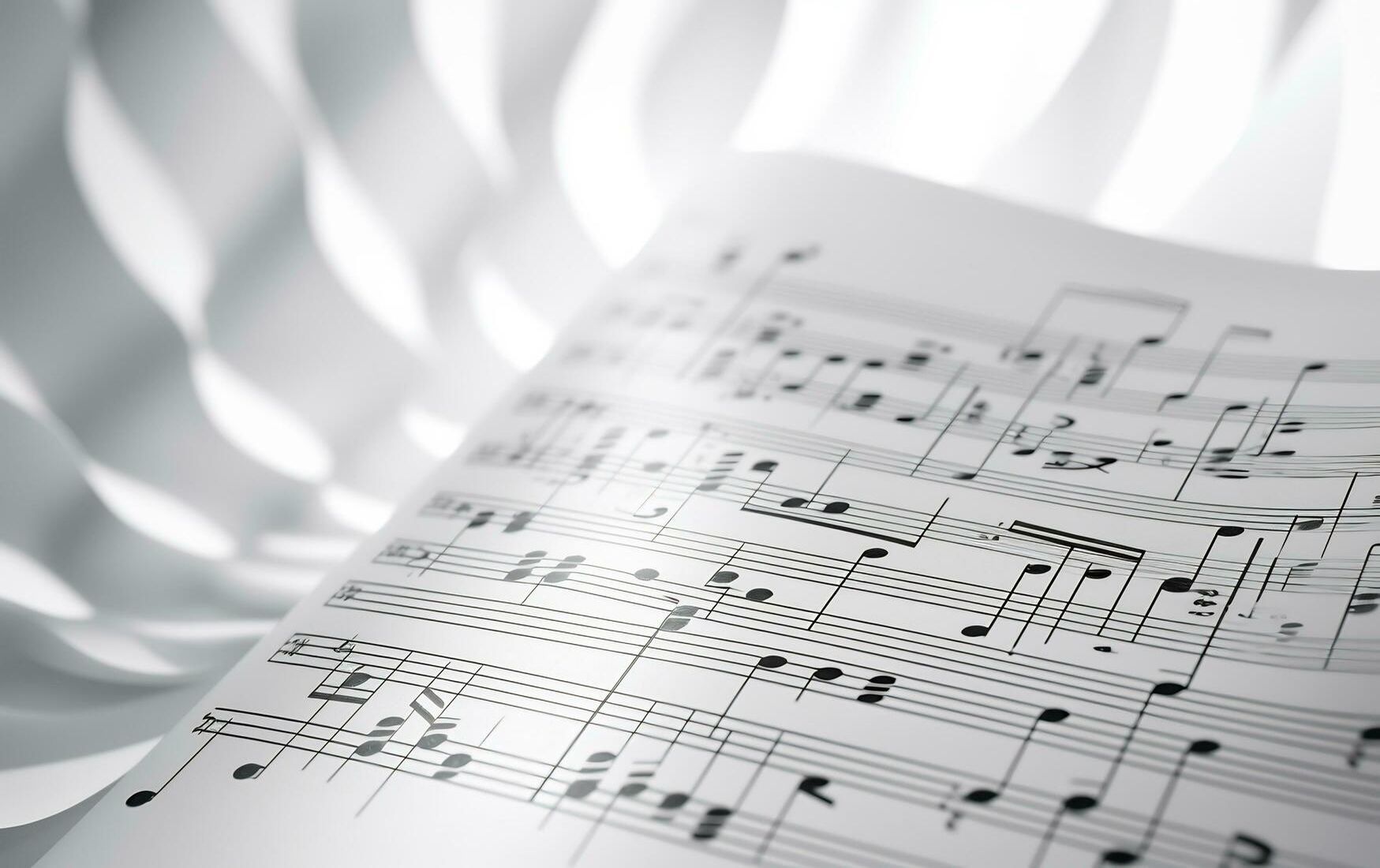Home>Production & Technology>Sheet Music>Which Notes Are Which On Sheet Music


Sheet Music
Which Notes Are Which On Sheet Music
Modified: January 22, 2024
Looking for sheet music? Learn how to differentiate between the various notes on sheet music to enhance your musical understanding.
(Many of the links in this article redirect to a specific reviewed product. Your purchase of these products through affiliate links helps to generate commission for AudioLover.com, at no extra cost. Learn more)
Table of Contents
Introduction
In the world of music, sheet music serves as a universal language that allows musicians to recreate and perform a wide range of musical compositions. Whether you’re a beginner learning to read sheet music or a seasoned musician looking to expand your repertoire, understanding the basics of sheet music is essential.
Sheet music provides a written representation of musical notes, rhythms, and other musical symbols. It allows composers to communicate their musical ideas and enables musicians to interpret and perform those ideas accurately. By learning to read sheet music, musicians can unlock a treasure trove of musical possibilities, from classical compositions to contemporary hits.
In this article, we will explore the fundamental elements of sheet music, including the staff, clefs, note names, ledger lines, key signatures, accidentals, duration of notes, rests, dynamics, and articulations. By gaining an understanding of these concepts, you’ll be well-equipped to navigate and interpret sheet music with confidence.
Whether you’re a pianist, guitarist, vocalist, or any other type of musician, the ability to read sheet music opens up a whole new world of musical expression. So, let’s dive in and unravel the mystery of sheet music notation!
Basics of Sheet Music
Sheet music is written using a standardized notation system that represents musical notes, rhythms, and various symbols. It serves as a guide for musicians to perform a piece of music accurately. Understanding the basics of sheet music is crucial for anyone who wants to read and interpret musical compositions.
At its core, sheet music consists of a series of horizontal lines called the staff. The staff provides a framework for placing musical notes and other symbols accurately.
The staff is divided into measures, which are separated by vertical lines called bar lines. Each measure contains a certain number of beats, and the time signature at the beginning of the sheet music indicates the number of beats per measure and the note value that represents one beat.
In addition to the staff and bar lines, sheet music incorporates various musical symbols and notations. These include clefs, key signatures, accidentals, durations of notes, rests, dynamics, and articulations.
The purpose of these symbols is to convey important aspects of the music, such as the pitch, tempo, expression, and phrasing. By understanding and interpreting these symbols, musicians can bring the composer’s intentions to life.
Whether you are a beginner or an experienced musician, it is essential to familiarize yourself with the basics of sheet music. This knowledge will not only enable you to read and interpret music accurately but also open up a world of possibilities for learning new compositions and expanding your musical repertoire.
In the following sections, we will delve deeper into each element of sheet music, providing you with a comprehensive understanding of how to read, interpret, and perform music notation.
The Staff
The staff is a fundamental element of sheet music and provides a visual representation of musical notes. It consists of five horizontal lines and four spaces, where musicians place notes and other musical symbols to indicate the pitches and durations of sounds.
The lines and spaces on the staff are numbered from bottom to top. The bottom line represents the lowest pitch, while the top line represents the highest pitch within the staff’s range. The spaces between the lines represent the pitches that fall between the lines.
By placing notes on different lines or spaces, composers and arrangers can indicate specific pitches that musicians should play or sing. Each line and space on the staff corresponds to a specific note letter name, which we will explore in the upcoming sections.
To extend the range of the staff and represent notes that fall outside the standard staff lines and spaces, additional lines called ledger lines are used. Ledger lines are short horizontal lines placed above or below the staff, providing an extended range for musical notation.
The staff is notated using different clefs, which we will discuss in the next section. Common clefs include the treble clef (used for higher-pitched instruments like the piano’s right hand or the violin) and the bass clef (used for lower-pitched instruments like the piano’s left hand or the cello).
Understanding how to read and interpret the staff is essential for any musician. It allows you to read music notation accurately, identify pitches, and navigate the musical landscape within a piece of sheet music.
In the next section, we will explore the different types of clefs used in sheet music notation and how they influence the placement of musical notes on the staff.
Clefs
In sheet music, clefs play a vital role in indicating the pitch range of the staff. They determine which lines and spaces on the staff correspond to specific notes. There are several types of clefs used in music notation, with the most common ones being the treble clef and the bass clef.
The treble clef, also known as the G clef, is typically used for higher-pitched instruments, such as the piano’s right hand, violin, flute, and trumpet. The treble clef symbol resembles a stylized letter “G” and is placed on the second line of the staff. This positioning indicates that the line represents the note G above middle C.
On the other hand, the bass clef, also known as the F clef, is utilized for lower-pitched instruments like the piano’s left hand, cello, bass guitar, and tuba. The bass clef symbol resembles a stylized letter “F” and is placed on the fourth line of the staff. This positioning signifies that the line represents the note F below middle C.
In addition to the treble and bass clefs, other clefs exist but are less commonly used. For example, the alto clef is predominantly used for the viola, and the tenor clef is utilized for certain instruments like the trombone and the upper range of the cello.
When encountering music with different clefs, it is crucial to understand how the placement of notes on the staff corresponds to their pitch. Familiarizing yourself with the various clefs will help you navigate sheet music more comfortably and accurately.
As a musician, having a solid understanding of clefs allows you to read and interpret musical notation effectively. It enables you to identify the notes represented by each line and space on the staff and play or sing them at the correct pitch.
In the next section, we will dive into the names of the notes and how they correspond to the lines and spaces on the staff.
Note Names
Understanding note names is crucial for reading and interpreting sheet music accurately. Each line and space on the staff represents a specific note letter name, allowing musicians to identify the pitches they need to play or sing.
In the treble clef, the lines of the staff, from bottom to top, represent the notes E, G, B, D, and F. To remember these note names, you can use the mnemonic “Every Good Boy Deserves Fudge.” The spaces between the lines, from bottom to top, represent the notes F, A, C, and E. You can remember these spaces as the word “FACE.”
In the bass clef, the lines of the staff, from bottom to top, represent the notes G, B, D, F, and A. You can memorize these notes using the mnemonic “Good Boys Do Fine Always.” The spaces between the lines, from bottom to top, represent the notes A, C, E, and G. These spaces can be remembered as “All Cows Eat Grass.”
As you become more comfortable with reading sheet music, you will be able to quickly identify the note names based on their position on the staff. This skill is essential for accurately playing or singing the intended pitches.
It is important to note that the notes on the staff can extend beyond the lines and spaces using ledger lines. Ledger lines are short horizontal lines added above or below the staff to indicate notes that fall outside the standard range. The note letter names continue sequentially as you go above or below the staff.
Mastering note names is a fundamental step in becoming proficient at reading sheet music. It allows you to identify the pitches represented on the staff and play or sing them at the right frequency. As you practice, you will develop fluency in recognizing note names and apply that knowledge to navigate more complex musical compositions.
In the next section, we will explore ledger lines and how they expand the range of notes represented on the staff.
Ledger Lines
Ledger lines are short horizontal lines that extend the range of the staff, allowing musicians to notate notes that fall above or below the standard lines and spaces. They provide a seamless continuation of the staff, indicating pitches that exceed the staff’s normal range.
When notes are positioned on ledger lines, their letter names continue sequentially from the last line or space of the staff. For example, if there is a note positioned on a ledger line above the staff’s top line in the treble clef, it would be the letter name G. Likewise, a note positioned on a ledger line below the staff in the bass clef would be the letter name A.
It’s important to remember that ledger lines exist both above and below the staff, and their placement determines the pitch of the note. Musicians must be able to identify and interpret notes on ledger lines to accurately perform a piece of music.
Aside from individual notes, ledger lines can also be used to extend the duration of a note or a series of notes. In these cases, a horizontal line is drawn across the extended range, indicating that the notes should be held for an extended duration.
Understanding how to read and interpret ledger lines expands your ability to navigate a wider range of musical compositions. It allows you to accurately read and perform notes that fall outside the standard lines and spaces of the staff.
As you gain more experience with reading sheet music, identifying ledger lines will become easier and more intuitive. With practice, you’ll be able to swiftly recognize and interpret notes and durations represented on ledger lines, enhancing your overall musical proficiency.
In the next section, we will uncover the significance of key signatures and how they impact the interpretation of sheet music.
Key Signatures
Key signatures are an important aspect of sheet music notation that indicate which notes within an octave are altered to create a specific key. They are represented by a set of sharps ♯ or flats ♭ placed at the beginning of each staff, right after the clef symbol.
A key signature can have either sharps or flats, or it can be neutral with no sharps or flats, indicating the key of C major or A minor. The number of sharps or flats in the key signature determines the key.
For example, if a key signature has one sharp, it is the key of G major or E minor, while two sharps indicate the key of D major or B minor. Flats in the key signature follow a similar pattern, with one flat representing the key of F major or D minor.
Key signatures are positioned on specific lines or spaces of the staff, indicating which notes are affected by the sharp or flat. The order in which the sharps or flats appear in the key signature follows a pattern known as the circle of fifths.
Understanding key signatures is essential for musicians because they determine the tonality of a piece of music. They provide valuable information about the harmonic structure and help musicians play or sing the correct notes within a given key.
When reading sheet music, take note of the key signature at the beginning of each staff. It will guide you in identifying which notes are altered throughout the piece. Practice identifying key signatures and familiarize yourself with the specific scales and tonalities associated with each.
By becoming proficient in understanding and interpreting key signatures, you’ll gain a deeper understanding of the music you’re performing. It will enhance your musicality and allow you to play or sing with greater accuracy and expression.
In the next section, we will explore accidentals, which are temporary alterations to the pitch within a musical passage.
Accidentals
In addition to the notes indicated by the key signature, sheet music may also contain accidentals. Accidentals are symbols that temporarily alter the pitch of a note, overriding the key signature’s instructions.
The three most common accidentals are the sharp (♯), flat (♭), and natural (♮). A sharp raises the pitch of a note by a half step, while a flat lowers it by a half step. The natural cancels any previous sharp or flat, returning the note to its original pitch.
Accidentals can occur within a measure or even for just a single note. They are written in front of the note they affect and remain in effect until the end of the measure, unless canceled by another accidental or a natural sign.
Accidentals allow composers to add chromaticism and color to their compositions. They can introduce tension, create unique harmonies, or add expressive elements to the music. As a musician, it’s essential to be aware of accidentals and interpret them correctly to play or sing the intended pitches.
When encountered with an accidental, carefully observe the symbol and its position relative to the note. Sharps are placed on a higher line or space, flats on a lower line or space, and naturals can be written above or below the note.
Accidentals can appear in various musical contexts, whether in melody lines, accompanying chords, or even within a complex musical passage. Pay close attention to accidentals while reading sheet music, and practice recognizing and playing the altered pitches accurately.
By understanding and correctly interpreting accidentals, you can ensure that you play or sing the right notes, even when they deviate from the key signature’s instructions. This ability will enhance your musicality and contribute to your overall performance prowess.
In the next sections, we will delve into aspects related to the duration of notes, rests, dynamics, and articulations in sheet music notation.
Duration of Notes
The duration of notes is a crucial element in sheet music notation that indicates how long a note should be held or performed. It is essential for understanding the rhythm and timing of a piece of music.
Notes are represented by different shapes, each with a corresponding duration. The most common note types include whole notes, half notes, quarter notes, eighth notes, and sixteenth notes. Whole notes are held for four beats, while each subsequent note type is divided in half, indicating shorter durations.
In addition to the basic note types, notes can also be modified with flags or beams to indicate further divisions of beats. For example, two eighth notes are typically joined by a beam, indicating that they are played in quick succession within one beat.
Rhythm is the heartbeat of music, and understanding the duration of notes is essential for maintaining a steady and accurate tempo. By correctly interpreting the duration of notes, you can ensure that you perform the musical rhythms as intended by the composer.
To read the duration of notes, observe their shape and the presence of flags or beams. Practice counting and clapping the rhythms to internalize the timing and feel of different note durations.
It’s important to note that rests also have durations and indicate moments of silence within the music. Rests follow the same rules of duration as notes, with whole rests representing four beats of silence and shorter rests denoting progressively shorter durations.
Understanding the duration of notes allows you to perform music with precision and accuracy. By internalizing the rhythm and timing, you can bring life and coherence to a musical composition.
In the next section, we will explore rests and their role in sheet music notation.
Rests
In sheet music, rests are symbols that represent moments of silence or pauses within a musical composition. Rests are as important as notes when it comes to interpreting rhythm and timing.
Rests are denoted by different shapes and positions on the staff, just like notes. The most common rest types include the whole rest, half rest, quarter rest, eighth rest, and sixteenth rest. Each rest corresponds to a specific duration, just like its note counterpart.
Similar to notes, rests also follow the rules of duration division. For example, two eighth rests are equivalent to one quarter rest, and four sixteenth rests add up to one quarter rest.
Rests serve several purposes in sheet music:
- Creating moments of silence to punctuate phrases or sections of a composition.
- Providing musical clarity by separating notes and indicating clear divisions of rhythm.
- Aiding musicians in counting and maintaining a steady tempo.
It is important to give proper attention to rests while reading and performing sheet music. Treat rests as carefully as you would treat notes, and observe their duration in relation to the overall rhythm of the piece.
Practice counting and internalizing the rests along with the notes to develop a strong sense of timing and rhythm. This will help you navigate the music accurately and add depth to your interpretation.
By understanding and interpreting rests in sheet music, you can contribute to the overall musicality of the composition. Embrace the moments of silence and use them as opportunities to bring out the full potential and expressive qualities of the music.
In the next sections, we will explore dynamics, articulations, and other musical symbols that add depth and character to sheet music notation.
Dynamics
Dynamics in sheet music notation refer to the varying levels of volume and intensity in a musical piece. They provide instructions for musicians on how loud or soft to play or sing specific sections or individual notes.
Dynamics are indicated by Italian terms and symbols that convey specific intentions to the performer. The most commonly used dynamic markings include:
- Fortissimo (ff): Very loud
- Forte (f): Loud
- Mezzo forte (mf): Moderately loud
- Mezzo piano (mp): Moderately soft
- Piano (p): Soft
- Pianissimo (pp): Very soft
These dynamic markings are not absolute measures of sound but are relative to the context of the piece. They guide musicians in interpreting the emotional and expressive qualities intended by the composer.
In addition to the basic dynamic markings, composers also use symbols and notations to indicate changes in dynamics throughout the music. Crescendo (gradually getting louder) and decrescendo or diminuendo (gradually getting softer) are common markings to indicate changes in volume over a passage of music.
Understanding dynamics is essential for adding depth, emotion, and contrast to your musical performance. It allows you to bring out the intended expressive qualities of the music and create musical tension and release through changes in volume.
When reading sheet music, pay close attention to the dynamic markings. Absorb the intentions they convey and be mindful of the changes in volume indicated by the composer.
By effectively interpreting and incorporating dynamics into your performance, you can elevate the musical experience and captivate listeners with a wide range of expressive qualities.
In the next section, we will explore articulations, which provide instructions for the execution of individual notes and phrasing within a musical passage.
Articulations
Articulations in sheet music notation provide instructions on how individual notes should be performed or executed within a musical passage. They offer guidance on the clarity, attack, duration, and phrasing of each note or group of notes.
Articulations are represented by various symbols, marks, or notations placed above or below the note. Each symbol carries a specific meaning and affects the way a note is played or sung. Some common articulation markings include:
- Staccato: A dot placed above or below a note, indicating that it should be played or sung short and detached.
- Legato: A curved line extending over a series of notes, indicating that they should be played or sung smoothly and connected.
- Tenuto: A horizontal line placed above or below a note, indicating that it should be played or sung with a sustained and full value.
- Accent: A mark placed above or below a note, indicating that it should be played or sung with emphasis or a strong attack.
- Slur: A curved line connecting two or more notes of different pitches, indicating that they should be played or sung smoothly without separation.
Understanding and interpreting articulations is crucial for capturing the intended expressive qualities and phrasing of a musical piece. They contribute to the overall musical interpretation and add nuance, character, and personality to the performance.
When reading sheet music, carefully observe and embody the indicated articulations. Practice incorporating them into your playing or singing to bring out the desired musical effects and to convey the composer’s intentions.
By mastering articulations, you can enhance your musicality, create dynamic contrasts, and communicate the emotions and moods of the music to your audience.
In the final section, we will conclude our exploration of sheet music basics and reiterate the importance of understanding and applying these concepts to your musical journey.
Conclusion
Understanding the basics of sheet music is essential for any musician seeking to read, interpret, and perform a wide range of musical compositions. From the staff and clefs to note names, key signatures, duration of notes, rests, dynamics, and articulations, each element plays a crucial role in conveying the composer’s intentions and bringing the music to life.
By familiarizing yourself with the staff, you can navigate the pitch range and identify note letter names with ease. Understanding clefs enables you to read music suited for specific instruments or vocal ranges. Key signatures dictate the tonality and provide valuable insights into the harmonic structure of a piece. Accidentals and dynamics add color, expressiveness, and volume variations to your performance. Meanwhile, the duration of notes and rests ensure accurate tempo and rhythm execution. Lastly, articulations give clarity, phrasing, and character to individual notes and musical passages.
As you continue your musical journey, engage in regular practice to sharpen your skills in reading and interpreting sheet music. Immerse yourself in a variety of musical genres and pieces to further expand your understanding and proficiency.
Remember that sheet music is not merely a set of symbols; it is a gateway to express your musicality and share emotions with others. Approach it with curiosity, passion, and a desire to bring out the best in every note and phrase.
Take the time to study and internalize the fundamentals we have explored in this article. As you gain fluency in reading sheet music, you will experience the joy of performing a vast repertoire of music and connecting with audiences on a deeper level.
Embrace the beauty and power of sheet music, and let it be a constant companion in your musical endeavors.

